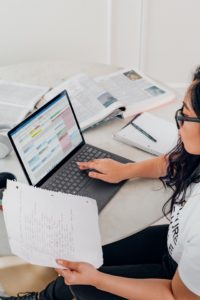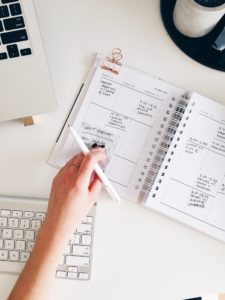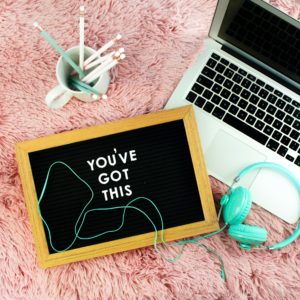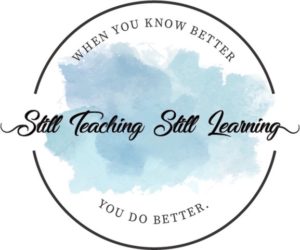
If you are a teacher who is teaching remotely again this year, I’m in it with you. We will all get through this together.
Here are 12 things I am doing before school officially starts.



1 – Since we use Google Suite tools, my grade level team and I are setting up a Google site to be linked to our school website. What we are including to start:
*our schedule
*how to contact us
*directions for parents on how to navigate Google Classroom
*links to our weekly email updates
*tech troubleshooting videos for students (how to log in, how to turn in assignments on Google Classroom, etc.)
2 – We are scheduling one-to-one Google Meets with students. These visits are very brief but give us a chance to connect with each student before school begins, answer questions, ask them questions about themselves — all the things we would do if we were having a “Meet the Teacher” event at school. We are using Sign Up Genius to schedule these meetings.



3 – We are sending an email to ask parents for important “what I need my child’s teacher to know before the first day of school” information.
In this email, we will ask for:
*the preferred way to contact parents (email, cell phone, another phone)
*if there are other adults they want us to communicate with regarding their child’s learning (tutors, other parents who are assisting with remote learning, grandparents, babysitters, etc.)
*information about how their child is feeling about back to school
*any other information the parent wants us to know before the first day.
4 – send an “I’m so glad you’re in my class” email to each student prior to the first day. (In other years, I think it’s great to send postcards through the mail, but everything has been down to the wire this year.) If you have time to send postcards through the mail, here’s a cute option from Sherry Beauchamp on Teachers Pay Teachers.



5 – I will set a daily schedule for myself — when I am “on” and teaching and when I am “off.”
This is so important because I noticed in the spring that responding to emails, giving feedback on student work, etc. took SO much longer than usual. And because I had my computer and nowhere else to go, I would just work all day and into the evening. I knew it wasn’t healthy, but we were in crisis mode.
We’re still somewhat in crisis mode, but this is a more familiar scenario now, unfortunately. Since we have no idea how long this is going to last, I need to be more careful about setting up a healthier schedule for myself and keep some boundaries between “work” and “home.”



6 – I am going to stick to a daily self-care routine that includes these 10 basics:
*Getting 7-8 hours of sleep every night
*Get up earlier in the morning so I have time for myself and for a somewhat leisurely morning routine. Here’s my post about developing your own morning routine.
*Exercise for 30 minutes every day
*Eat 6-10 servings of fruit & vegetables every day
*Keep up with my gratitude journal (see more about that in my morning routine post)
*Keep up with my morning pages (see more about that in my morning routine post)
*Talk/vent/share with someone about school stuff every day (preferably another teacher or former teacher who understands what you’re dealing with)
*Read every day (something unrelated to education)
*Listen to a podcast or a book on Audible
*Walk for a few minutes
I know I talk a lot about self-care on this blog, but that’s because I see it as the #1 way to be your best self and to be the best you can be for the people in your life. Here’s a recent post about how self-care helps you be the best teacher you can be.
(By the way, if you’re feeling a lot of anxiety about getting your school year started, join my course “Calm the Overwhelm of Back to School Planning.” It will help you out with that self-care part as well!)



7 – Set up my office/teaching space. Here are some things I found useful for teaching back in the spring and which I will use again.
I’m also ordering these:
*blue light blocking glasses
*desktop portable whiteboard
8 – We’ve also discussed doing an in-person meeting with students, either at their home (socially distanced and outside) or at a local park or another meeting place. Have any of you done this? If so, do you have any good tips?



9 – Make sure that I know every student’s name and that I am pronouncing them correctly. I simply ask the child to tell me how they pronounce their name.
10 – In addition to getting to know my students, it’s also important for me to get to know their families. So, in addition to the hundreds of other things on my list, I plan to communicate with all families before school begins or within the first two weeks.
Phone calls might be the best way to do this, but I will offer either a phone call or a Google Meet. We will talk about their goals for their child, etc. I will also send home the list of questions in advance so that parents can think about their responses. They can email these back to me or have a conversation with me – whichever they prefer.
Here’s an example of some of the questions I usually ask:
*What does your child like most about school and learning?
*Is there anything about your child’s learning style that you would like me to know or that would help me encourage their best learning?
*What are your child’s strengths? What are they good at or enjoy doing? (It does not have to be anything in relation to school)
*As a parent/guardian, what are you most concerned about this year in fifth grade? (Reading, math, friends, new school . . . anything you think I should know.)



11 – When you talk to parents, here are some helpful tips: introduce yourself & express your enthusiasm for having their child in your class, be honest about how you feel about remote learning but stay positive.
Emphasize that you are going to do the very best job you can do and make this experience the best you can for their child. Tell them how and when they can contact you and when you are available. Find out how they would prefer to be contacted – email or phone.
Share your schedule for the day so they know when their child needs to be available for “live” teaching and when your office hours will be. If you can, introduce them to whatever online platform your school uses.
Tell them how they can access the information they might need as you begin online instruction (the schedule, for instance). Let them express their own concerns and ask questions. If you don’t know the answers,
write the questions down and assure the parents that you will get back to them with some kind of answer or response.
Even if your district is great about communicating all of this stuff to parents, your personal contact with families will go a long way for helping parents see that you are on their side.



12 – One of the things that families may tell you is their frustration with not knowing how to access online learning platforms (such as Zoom, SeeSaw, or Google Classroom/Google Meet). Consider sharing some videos showing how to use these tools. You can make videos yourself or search for them on YouTube. Thankfully, there are a lot of great options out there right now since we’re all doing this kind of instruction!
We can do this. Have a great start to your school year!
